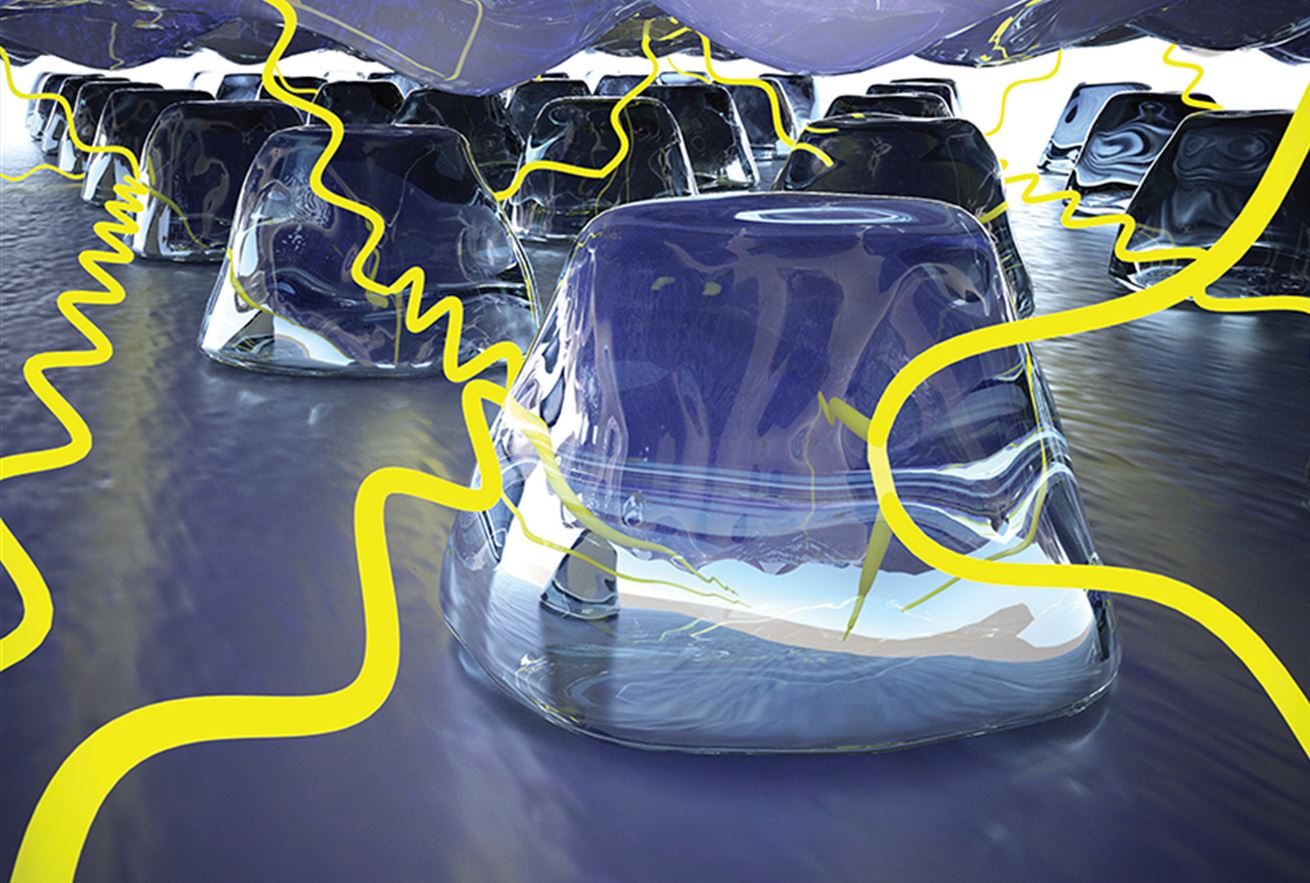14.03.2017
Ultrathin CIGSe solar cells need much less rare earth elements and energy for production. Unfortunately, they are much less efficient too. Now a team at HZB together with a group in the Netherlands has shown how to prevent the absorption loss of ultrathin CIGSe cells. They designed nanostructured back contacts for light trapping and could achieve a new record value of the the short circuit current density reaching nearly the best values for thicker CIGSe-cells.
CIGSe solar cells consist of Copper, Indium, Gallium and Selenide in a chalcopyrite structure and convert light into electrical energy. Thin film CIGSe cells have reached efficiency values as high as 22.6 percent in the lab and have some advantages in comparison to the widespread silicon solar modules, among them a very short energy payback time and a reduced sensitivity to shading.
Much less Indium needed
However, the mass production of CIGSe cells may impact the supply of Indium, since it belongs to the group of rare elements. An interesting option is to make thinner CIGSe films. Whereas a typical thin film CIGSe is 2-3 micrometers thick, “ultrathin” films of below 0,5 micrometer thickness would need much less Indium for a given area. Unfortunately, this will lead to a dramatic loss of absorption and thus efficiencies of cells.
Nanostructured back contacts plus reflector layers
The Young Investigator team Nanooptix at HZB, led by Prof. Martina Schmid, shows now how to prevent the absorption loss of ultrathin CIGSe cells. They, together with a group of Prof. Albert Polman in the Institute for Atomic and Molecular Physics (AMOLF), Netherlands, designed nanostructured back contacts consisting of a silica nanopattern on ITO for light trapping in ultrathin CIGSe cells.
Record short circuit current density
Combined with a back reflector and an anti-reflection layer, the champion cell with a CIGSe film of only 0.39 micrometer thickness shows a short circuit current density of 34.0 mA/cm2, which is, to date, the highest value in any ultrathin CIGSe cell and reaches 93% short circuit current density of record thick counterparts.
Nanostructures improve electrical properties as well
More interestingly, the nanostructured back contacts simultaneously improve the electrical performance of the cells, causing an efficiency enhancement of 47% relative to flat cells of equal thickness. “The achievements prove that the nanostructures are able to simultaneously benefit ultrathin CIGSe solar cells from both optical and electrical aspects” Guanchao Yin, first author of the publication, claims. “This result shows that optoelectronic nanopatterning provides a path to high efficiency cells with reduced materials consumption”, Prof. Martina Schmid says, who has now joined University of Duisburg as a professor for experimental physics. “With the Young Investigator team I could start my career and I thank HZB and Helmholtz-Association for this chance”, she says.
The work is published as a cover in Advanced Optical Materials (5, 2017):
Optoelectronic Enhancement of Ultrathin CuIn1–xGaxSe2 Solar Cells by Nanophotonic Contacts; Guanchao Yin, Mark W. Knight, Marie-Claire van Lare, Maria Magdalena Solà Garcia, Albert Polman, Martina Schmid















